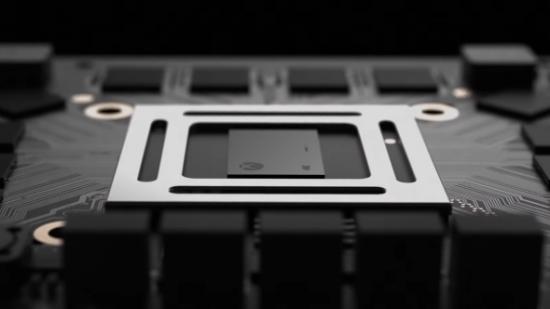As we mentioned the other day, some more detailed specs for the super-special new 4K Xbox, still called Project Scorpio at the moment, have been unveiled today. The big news is the steroid-pumped Polaris GPU at the heart of the Scorpio Engine, though that means there’s definitely no space for AMD’s Ryzen or Vega graphics tech.
Want to match Scorpio’s GPU power? You’re going to need something from our list of the best graphics cards around.
While it may sound like a plan for world domination, cooked up by an evil megalomaniac on a lump of rock called Skull Island, Project Scorpio is the biggest in-generation hardware update we’ve ever seen for a console. The big aim is for the machine to hit 4K resolutions natively. That’s a big ask considering the original Xbox One could barely muster the GPU performance to nail 1080p on a regular basis.
Eurogamer have been out in Redmond with Microsoft digging into the new console design. According to them the way Microsoft are managing the 4K demands is by utilising an upgraded custom AMD system-on-a-chip (SoC), the Scorpio Engine, which comprises of both Polaris GPU cores and elderly Jaguar CPU cores. It’s interesting, but probably not that surprising, to note that Microsoft either weren’t given, or dediced they didn’t need, early access to either AMD’s new Ryzen processor architecture or their upcoming Vega graphics tech.
Microsoft were working on getting the upgraded machine and its Scorpio Engine put together way before they’d have been able to get functioning Vega or Ryzen silicon in a state to be dropped onto an SoC they could mass produce in time for the holidays.
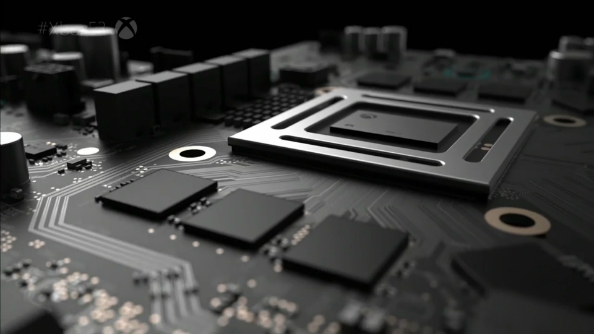
But the fact they’re managing 60fps out of essentially a beefed-up RX 480 GPU core running at 4K is pretty astounding. Especially when it’s being paired up with what are just slightly upclocked Jaguar CPU cores running at 2.1GHz.
The graphics component of the Scorpio Engine is sporting 40 Polaris-based GCN Compute Units (CUs) running at a pacey 1,172MHz. Compare that with the top Polaris 10 GPU in the RX 480 and you’ve got 36 CUs running at a maximum rated speed of 1,266MHz in reference card trim. Those 40 CUs give the Scorpio Engine a total of 2,560 GCN cores, but it’s arguably the memory structure of the new SoC which makes it more of a match for the 4K TVs it’s being aimed at.
After all, even the upcoming Polaris refresh, the AMD RX 500 series GPUs, aren’t going to come with that core count, or anywhere near that level of 4K performance on the PC.
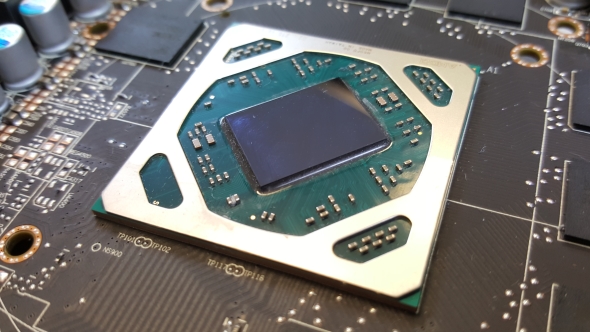
The 12GB of GDDR5 memory is arranged on a 384-bit memory bus and Microsoft promises it delivers a full 326GB/s of memory bandwidth. With all the super high-res assets needed to be shunted about for 4K gaming you need a huge amount of bandwidth and that’s what the switch from the Xbox One’s DDR3 memory to Project Scorpio’s GDDR5 design will offer. It doesn’t quite have the latency performance of DDR3 but the memory bandwidth is huge. And Sony’s Playstation 4 and Pro consoles have proven that GDDR5 is an admirable memory subsystem for a straight games console.
At the same time Microsoft have shifted some of the processing burden off those weakheart Jaguar CPU cores by offloading DirectX 12 onto the GPU instead. “We built that into the command processor of the GPU,” explained Micrsoft’s Andrew Goossen, “and what that means is that, for all the high frequency API invocations that the games do, they’ll all natively implemented in the logic of the command processor – and what this means is that our communication from the game to the GPU is super-efficient.”
Basically the DX12 API doesn’t have to involve the CPU at all when it needs to tell the graphics silicon what it needs to draw. That makes it hugely more efficient and massively cuts the CPU overhead in gaming.
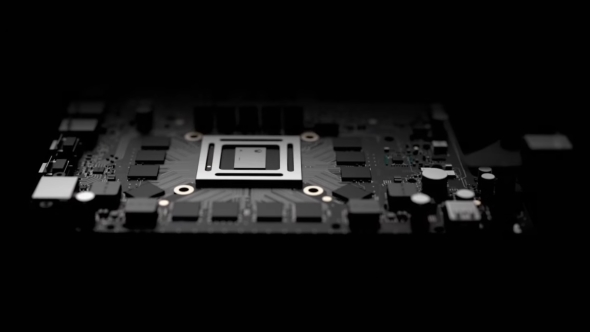
It’s this smart, almost lateral, thinking that means Microsoft didn’t need the Ryzen CPU architecture AMD are so proud of. “On the CPU side of things, we could still meet our design goals with the custom changes we made,” Microsoft’s Kevin Gammill told Eurogamer. “At the end of the day we are still a consumer product. We want to hit the price-points where consumers want to purchase this. It’s about balancing the two.”
It all sounds rather spectacular, with demos run in the Redmond office showing the Scorpio box happily flinging Forza around at 4K and 60fps some six months ahead of release. Whether all this talk of bandwidth and CPU offloading will mean we’re still seeing native 4K gaming once non-Microsoft developed games hit the upgraded box only time will tell, but that is the company’s main aim for the new console.
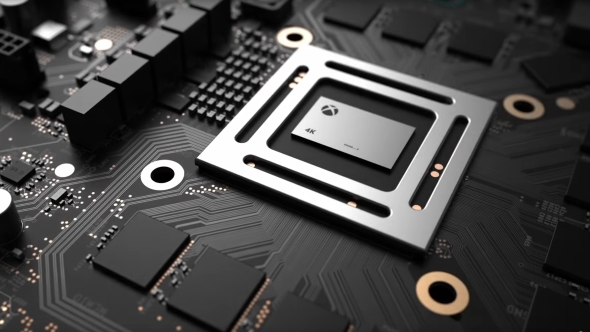
Still, I must admit to being a little jealous of Microsoft’s DirectX 12 adjustment on the Scorpio Engine. I doubt there’ll be a way to have the DirectX 12 API working directly on the GPU in our gaming rigs, though it might make prospective APUs more interesting if the same thing can be leveraged on them. Which is a big IF.
But if Microsoft’s Project Scorpio makes DirectX 12 something developers target first when creating games for the big boy console that may well do good things for the PC ports too. Most especially for PCs running AMD hardware too. If the software is prepped for DX12 in the same way AMD’s GCN architecture, and to some extent their many-core Ryzen CPUs, is then their hardware could see a substantial performance improvement in the future. Though that is absolutely just pure speculation at this point.
What isn’t speculation though is that, whatever Project Scorpio ends up being called when it does hit the market, it’s going to be a lot cheaper than a 4K-ready gaming PC is. Well, at least until the next-gen PC GPUs arrive anyways…
